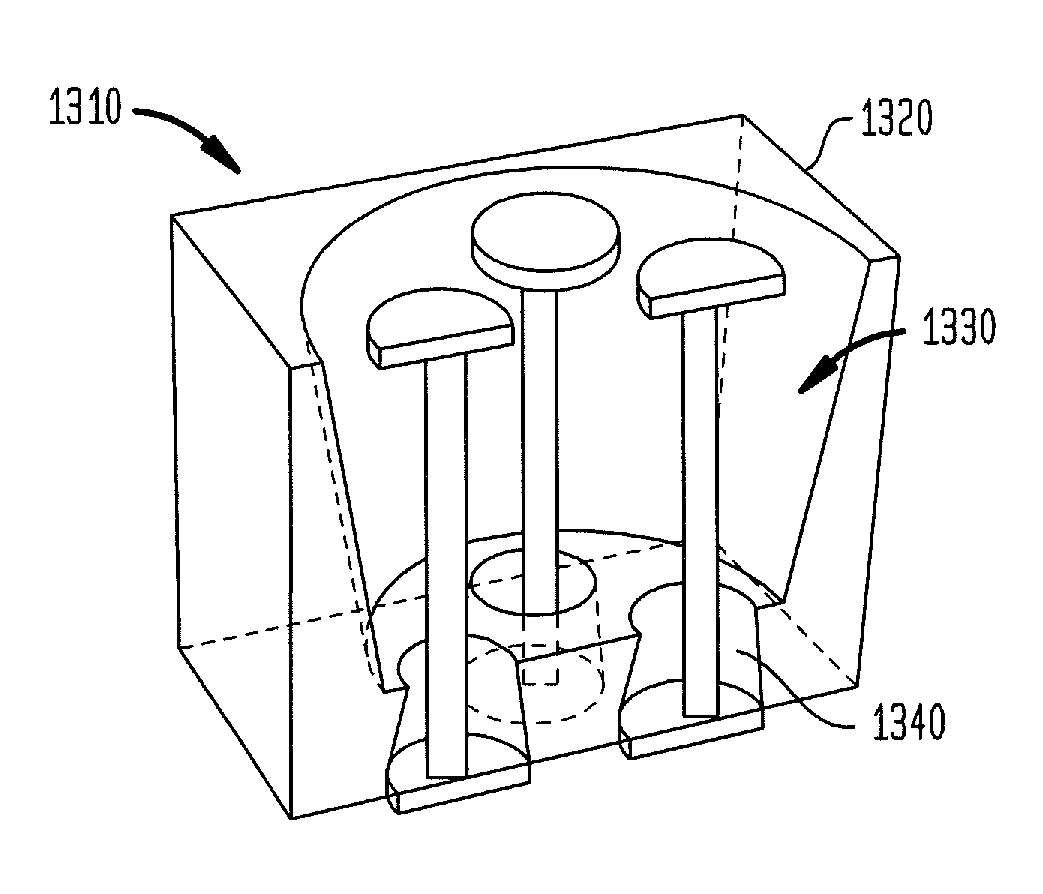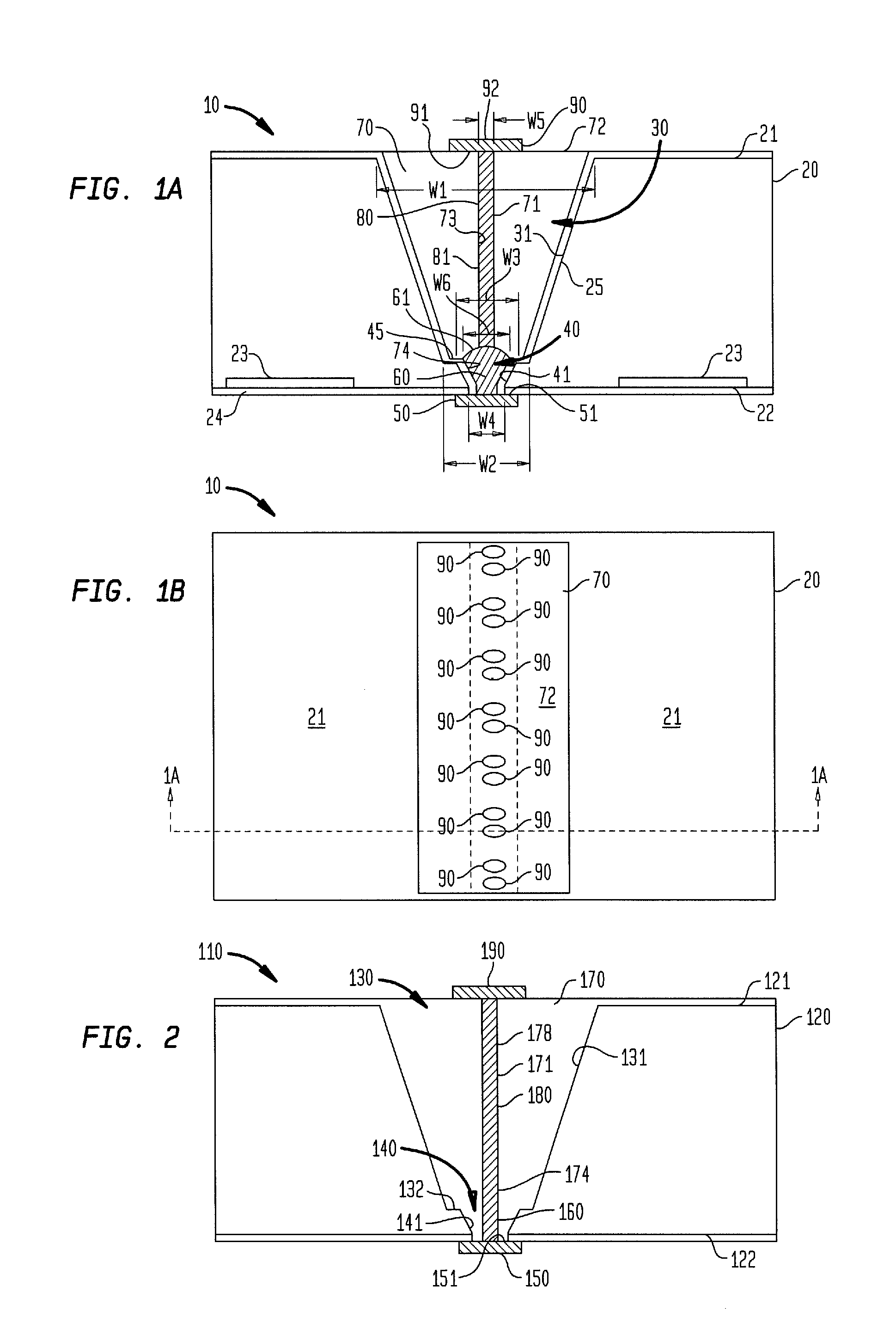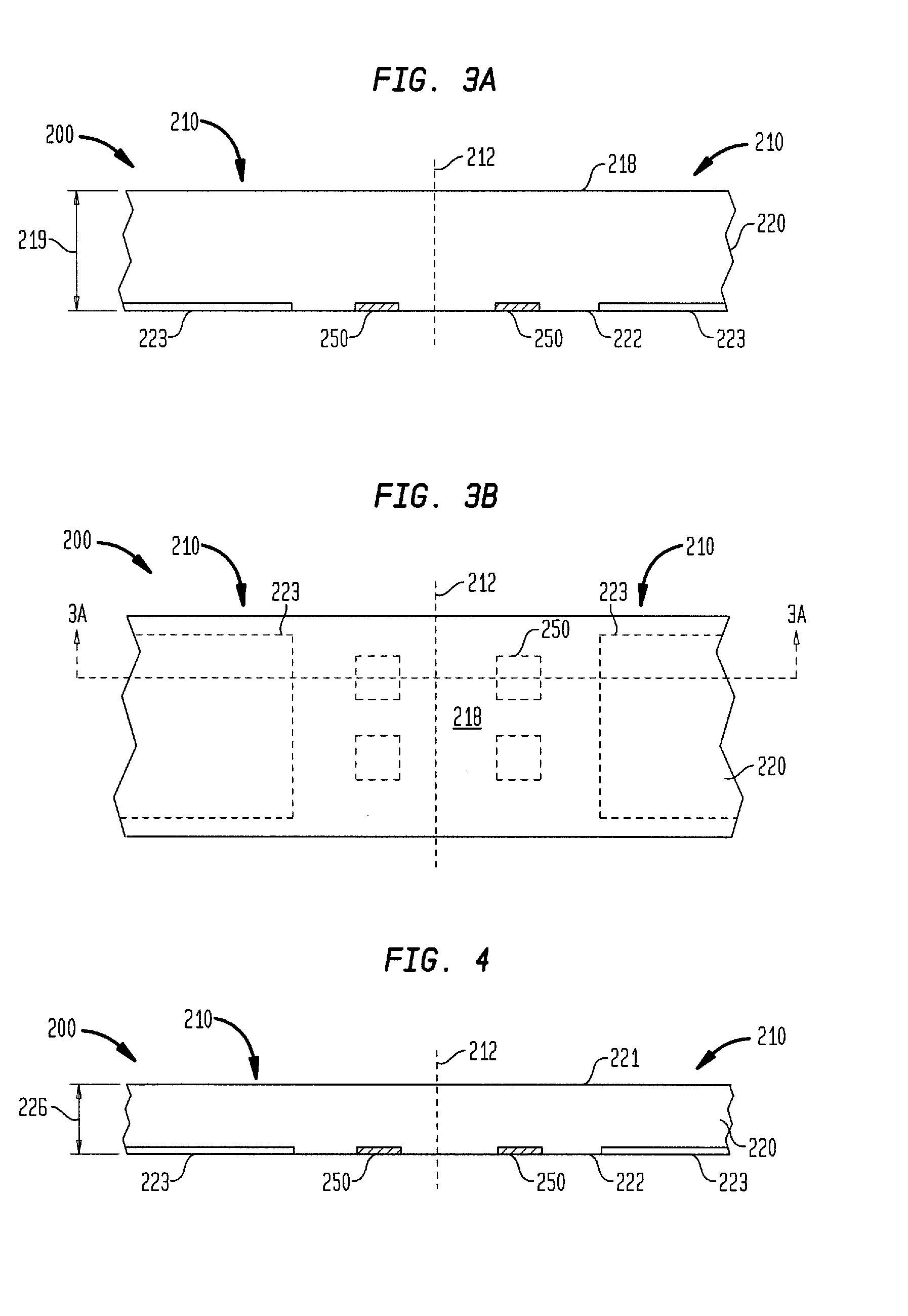Methods of forming semiconductor elements using micro-abrasive particle stream
a technology of micro-abrasive particles and semiconductor elements, applied in the field of packaging of micro-electronic devices, can solve the problems of increasing the amount of silicon, increasing the cost of each chip, and conventional methods of forming tsv holes, e.g., wet etching, etc., and can be relatively time-consuming and expensiv
- Summary
- Abstract
- Description
- Claims
- Application Information
AI Technical Summary
Benefits of technology
Problems solved by technology
Method used
Image
Examples
Embodiment Construction
[0058]In the embodiments shown and described herein, some or all of the openings in the semiconductor element are formed by directing a jet of fine abrasive particles onto a surface of the semiconductor element. The fine abrasive particles remove material exposed at the surface. As used herein, sandblasting means this process, whether or not the abrasive particles include sand or silicon dioxide particles, a main component of sand. Use of sandblasting to form some of the openings in a semiconductor element can reduce the time and cost of producing microelectronic units, while still permitting tight opening tolerances at the active face of a semiconductor element.
[0059]FIGS. 1A and 1B are a sectional view and a corresponding top-down plan view illustrating an example via structure that can be formed in accordance with an embodiment of the invention. In the embodiment shown in FIGS. 1A and 1B, sandblasting can be used to form one or more of the openings in the semiconductor element. M...
PUM
| Property | Measurement | Unit |
|---|---|---|
| Time | aaaaa | aaaaa |
| Time | aaaaa | aaaaa |
| Angle | aaaaa | aaaaa |
Abstract
Description
Claims
Application Information
 Login to View More
Login to View More - R&D
- Intellectual Property
- Life Sciences
- Materials
- Tech Scout
- Unparalleled Data Quality
- Higher Quality Content
- 60% Fewer Hallucinations
Browse by: Latest US Patents, China's latest patents, Technical Efficacy Thesaurus, Application Domain, Technology Topic, Popular Technical Reports.
© 2025 PatSnap. All rights reserved.Legal|Privacy policy|Modern Slavery Act Transparency Statement|Sitemap|About US| Contact US: help@patsnap.com



